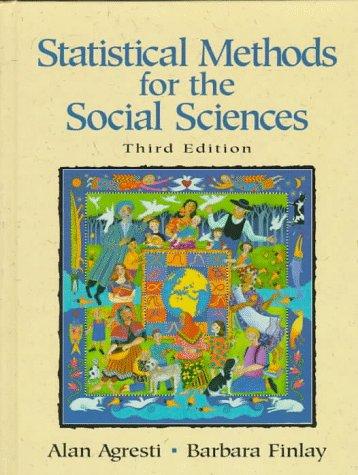46 *A confidence interval for a population correlation p requires a inathenatical transfor- ination of r for
Question:
46 *A confidence interval for a population correlation p requires a inathenatical transfor- ination of r for which the sampling distribution is approximately normal This transfor- mation is T(r) = (1/2) log[(1+r)/(1r)], where log denotes the natural (base-e) loganthm. The transformation of the population value p is denoted by T(p). The vari- able T(r) is approximately normally distributed about 7(p) with standard enor = 1/ 3. A confidence interval for T (p) is T(r) 207 Once we get the endpoints of the interval for T(p). we substitute each endpoint for 7 in the inverse transformation = (e21)/(2 + 1). where e denotes the exponential function (the inverse of the natural log function) These two values form the endpoints of the confidence interval for "
a) For the corelation of .899 for housing price and size in Table 94. show that T (1) = 1.47 Show that the standard en or of T() is.1054.
b) Show that a 95% confidence interval for T (p) is (1 26, 167).
c) Show that the corresponding confidence interval for p is (.85, .93). (Unless r = 0. the confidence interval for p is not symmetric about the point estimate r. because of the nonsymmetry of the sampling distribution of r.)
d) A confidence interval for the population value p of the coefficient of determination follows directly by squaring the limits of the confidence interval for p Find and interpret this confidence interval.
e) If the confidence interval for includes 0, explain why the lower endpoint of the confi- dence interval for p is also 0. and the upper endpoint is the larger of the squared endpoints of the confidence interval for p
Step by Step Answer:

Statistical Methods For The Social Sciences
ISBN: 9780135265260
3rd Edition
Authors: Alan Agresti, Barbara Finlay





